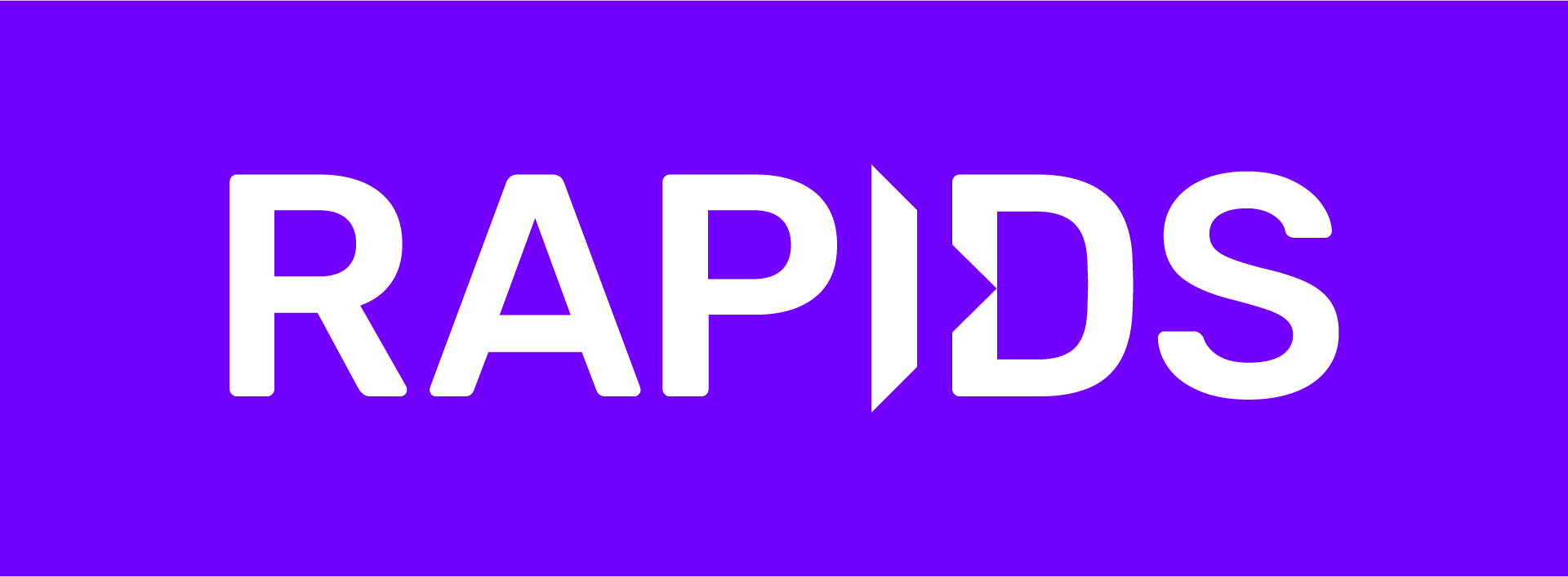NOTE: For the latest stable README.md ensure you are on the master branch.
CLX ("clicks") provides a collection of RAPIDS examples for security analysts, data scientists, and engineers to quickly get started applying RAPIDS and GPU acceleration to real-world cybersecurity use cases.
The goal of CLX is to:
- Allow cyber data scientists and SecOps teams to generate workflows, using cyber-specific GPU-accelerated primitives and methods, that let them interact with code using security language,
- Make available pre-built use cases that demonstrate CLX and RAPIDS functionality that are ready to use in a Security Operations Center (SOC),
- Accelerate log parsing in a flexible, non-regex method. and
- Provide SIEM integration with GPU compute environments via RAPIDS and effectively extend the SIEM environment.
CLX is targeted towards cybersecurity data scientists, senior security analysts, threat hunters, and forensic investigators. Data scientists can use CLX in traditional Python files and Jupyter notebooks. The notebooks folder contains example use cases and workflow instantiations. It's also easy to get started using CLX with RAPIDS with Python. The code below reads cyber alerts, aggregates them by day, and calculates the rolling z-score value across multiple days to look for outliers in volumes of alerts. Expanded code is available in the alert analysis notebook.
import cudf
import s3fs
from os import path
# download data
if not path.exists("./splunk_faker_raw4"):
fs = s3fs.S3FileSystem(anon=True)
fs.get("rapidsai-data/cyber/clx/splunk_faker_raw4", "./splunk_faker_raw4")
# read in alert data
gdf = cudf.read_csv('./splunk_faker_raw4')
gdf.columns = ['raw']
# parse the alert data using CLX built-in parsers
from clx.parsers.splunk_notable_parser import SplunkNotableParser
snp = SplunkNotableParser()
parsed_gdf = cudf.DataFrame()
parsed_gdf = snp.parse(gdf, 'raw')
# define function to round time to the day
def round2day(epoch_time):
return int(epoch_time/86400)*86400
# aggregate alerts by day
parsed_gdf['time'] = parsed_gdf['time'].astype(int)
parsed_gdf['day'] = parsed_gdf.time.applymap(round2day)
day_rule_gdf= parsed_gdf[['search_name','day','time']].groupby(['search_name', 'day']).count().reset_index()
day_rule_gdf.columns = ['rule', 'day', 'count']
# import the rolling z-score function from CLX statistics
from clx.analytics.stats import rzscore
# pivot the alert data so each rule is a column
def pivot_table(gdf, index_col, piv_col, v_col):
index_list = gdf[index_col].unique()
piv_gdf = cudf.DataFrame()
piv_gdf[index_col] = index_list
for group in gdf[piv_col].unique():
temp_df = gdf[gdf[piv_col] == group]
temp_df = temp_df[[index_col, v_col]]
temp_df.columns = [index_col, group]
piv_gdf = piv_gdf.merge(temp_df, on=[index_col], how='left')
piv_gdf = piv_gdf.set_index(index_col)
return piv_gdf.sort_index()
alerts_per_day_piv = pivot_table(day_rule_gdf, 'day', 'rule', 'count').fillna(0)
# create a new cuDF with the rolling z-score values calculated
r_zscores = cudf.DataFrame()
for rule in alerts_per_day_piv.columns:
x = alerts_per_day_piv[rule]
r_zscores[rule] = rzscore(x, 7) #7 day windowCLX is available in a Docker container, by building from source, and through Conda installation. There are multiple ways to start the CLX container, depending on if you want a container with only RAPIDS and CLX or you want multiple contianers to run that enable SIEM integration and data ingest.
Prerequisites
- NVIDIA Pascal™ GPU architecture or better
- CUDA 9.2 or 10.0 compatible NVIDIA driver
- Ubuntu 16.04/18.04 or CentOS 7
- Docker CE v18+
- nvidia-docker v2+
Pull the RAPIDS image suitable to your environment and build CLX image.
docker pull rapidsai/rapidsai-dev-nightly:0.12-cuda9.2-devel-ubuntu18.04-py3.7
docker build --build-arg image=rapidsai/rapidsai-dev-nightly:0.12-cuda9.2-devel-ubuntu18.04-py3.7 -t clx:latest .Now start the container and the notebook server. There are multiple ways to do this, depending on what version of Docker you have.
docker run --gpus '"device=0"' \
--rm -d \
-p 8888:8888 \
-p 8787:8787 \
-p 8686:8686 \
clx:latestdocker run --runtime=nvidia \
--rm -d \
-p 8888:8888 \
-p 8787:8787 \
-p 8686:8686 \
clx:latestIf you want a CLX container with SIEM integration (including data ingest), follow the steps above to pull and build the CLX container. Then use docker-compose to start multiple containers running CLX, Kafka, and Zookeeper.
docker-compose upYou can install CLX from source on an existing RAPIDS container. A RAPIDS image suitable for your environment can be pulled from https://hub.docker.com/r/rapidsai/rapidsai/.
# Run tests
pip install pytest
pytest
# Build and install
python setup.py installYou can conda install CLX on an existing RAPIDS container. A RAPIDS image suitable for your environment can be pulled from https://hub.docker.com/r/rapidsai/rapidsai/.
conda install -c rapidsai-nightly -c rapidsai -c nvidia -c pytorch -c conda-forge -c defaults clx
In addition to traditional Python files and Jupyter notebooks, CLX also includes structure in the form of a workflow. A workflow is a series of data transformations performed on a GPU dataframe that contains raw cyber data, with the goal of surfacing meaningful cyber analytical output. Multiple I/O methods are available, including Kafka and on-disk file stores.
Example flow workflow reading and writing to file:
from clx.workflow import netflow_workflow
source = {
"type": "fs",
"input_format": "csv",
"input_path": "/path/to/input",
"schema": ["firstname","lastname","gender"],
"delimiter": ",",
"required_cols": ["firstname","lastname","gender"],
"dtype": ["str","str","str"],
"header": "0"
}
dest = {
"type": "fs",
"output_format": "csv",
"output_path": "/path/to/output"
}
wf = netflow_workflow.NetflowWorkflow(source=source, destination=dest, name="my-netflow-workflow")
wf.run_workflow()For additional examples, browse our complete API documentation, or check out our more detailed notebooks.
For contributing guildelines please reference our guide for contributing.
